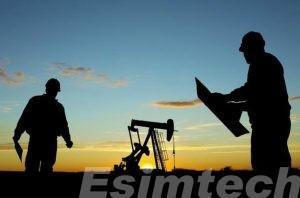The oil and gas industry has always been at the forefront of technological innovation, and today, automation is revolutionizing drilling operations. With the integration of artificial intelligence (AI) and robotics, oil rigs are becoming smarter, safer, and more efficient. These advancements are reducing human risk, optimizing production, and cutting operational costs.
AI-Powered Drilling Optimization
AI is transforming drilling by analyzing vast amounts of data in real time. Machine learning algorithms process geological surveys, drilling speed, pressure levels, and equipment performance to predict the best drilling paths and avoid hazards. Systems like autonomous drilling rigs adjust operations on the fly, minimizing errors and reducing non-productive time (NPT).
Companies like Shell and BP use AI-driven predictive maintenance to detect equipment failures before they happen, preventing costly downtime. AI also helps in reservoir management, ensuring maximum extraction with minimal waste.
Robotics for Safer and More Efficient Operations
Oil rigs are hazardous environments, but robotics are reducing human exposure to danger. Robotic drones and crawlers inspect pipelines, tanks, and offshore structures, identifying cracks or corrosion without putting workers at risk.
Automated robotic arms handle heavy machinery, while autonomous underwater vehicles (AUVs) perform deep-sea inspections and repairs. Companies like Schlumberger and Halliburton deploy robotic systems for well intervention, reducing the need for manual labor in high-risk zones.
The Future of Automated Oil Rigs
The next phase of automation includes fully autonomous drilling rigs that operate with minimal human oversight. These rigs will use AI, IoT sensors, and 5G connectivity to communicate in real time, ensuring seamless coordination between onshore and offshore teams.
While automation raises concerns about job displacement, it also creates new roles in AI supervision, robotics maintenance, and data analysis. The focus is shifting from manual labor to tech-driven efficiency.
Conclusion
AI and robotics are reshaping oil drilling, making it faster, safer, and more cost-effective. As technology advances, we can expect even greater automation, reducing environmental impact and improving energy production. The future of oil rigs is not just automated—it’s intelligent.









Share this page with your family and friends.